MARKET OVERVIEW
The global generative AI in marketing market is a niche within the larger technology and advertising sector, where machine learning algorithms are employed to generate content, automate campaigns, and tailor customer engagement strategies. This market will not be about chatbots or content-creation tools alone. Rather, it will construct a more sophisticated model for marketing execution, where algorithms read consumer data to develop compelling material that adapts real-time according to audience behavior.
Instead of merely serving as tools, generative AI models will be integrated into marketing frameworks. These frameworks will be assigned creative and analytical tasks producing product copy, creating email campaigns, and testing audience reactions prior to rolling out actual campaigns. By doing so, companies will move away from relying on manual A/B testing to predictive automation that adapts with every customer interaction. The global generative AI in marketing market will be more than skin-deep automation and venture into scenario modeling, dynamic narrative, and sophisticated linguistic tailoring to niche audiences.
This market will not be limited to digital agencies and corporate giants. It will gain the interest of mid-tier and up-and-coming brands that wish to reduce turnaround time and enhance return on ad spend. Such firms will look for solutions that enable them to produce more content while maintaining brand voice. They will also expect transparency in how generative models work resulting in new practices around AI ethics, governance, and output quality control. In the long run, technology vendors for the global generative AI in marketing market will have to provide more than velocity; they will have to provide creative consistency, data privacy, and regulatory compliance.
One significant change that will characterize this market is replacing fixed content calendars with dynamic frameworks. Campaigns won't be planned months in advance anymore; brands will turn to systems that look at customer trends minute by minute and produce content accordingly. These dynamic systems will be dependent on highly advanced natural language models, adept at comprehending cultural underpinnings and shifts in sentiment. Therefore, brands will act more like publishers, supplying audiences with new content that is timely and topical, without the need to build out creative departments.
Global tactics also will change within this market. Localization will be increasingly seamless as generative models refine messaging for unique markets taking into consideration language fluctuation, regional values, and buying habits. It will minimize the necessity for outside translators or culturally knowledgeable teams. This will be particularly important for global brands attempting to keep up consistency while customizing at scale.
The global generative AI in marketing market will not merely change how advertisements are written or scripts are written for videos. It will change the nature of connecting with people across platforms, allowing companies to have intimate conversations with millions of people simultaneously. As this market develops further, companies will be forced to rethink the organizational structure of their marketing teams, the place of creativity, and how they define success in the era of AI-driven engagement.
Global generative AI in marketing market is estimated to reach $38,264.97 Million by 2032; growing at a CAGR of 35.9% from 2025 to 2032.
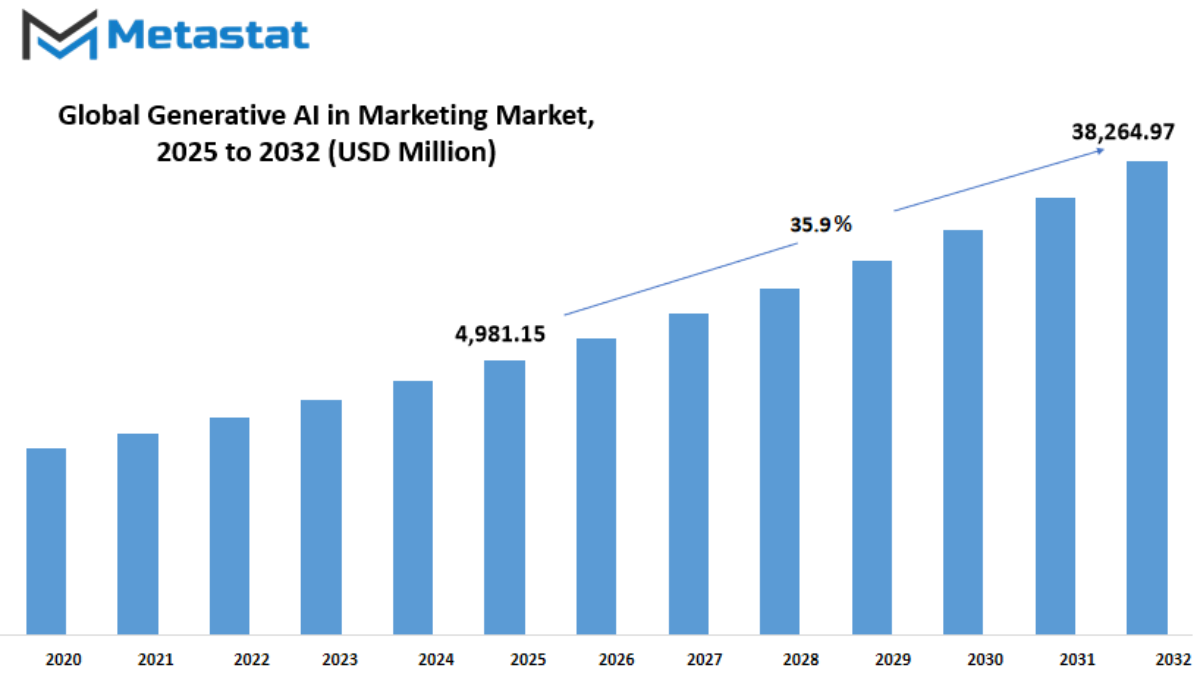
GROWTH FACTORS
The global generative AI in marketing market is expected to grow steadily as businesses seek smarter, faster ways to connect with customers. One of the biggest factors pushing this growth is the increasing demand for personalized content. Brands want to engage their audiences on a deeper level, and generative AI helps them do that by producing tailored messages, product recommendations, and ad creatives quickly and efficiently. Another strong driver is the need to save time and money. Companies are turning to AI tools to automate repetitive marketing tasks, from writing product descriptions to generating social media content. These tools help teams work faster while maintaining quality, which is especially important in today’s fast-moving digital environment.
Still, there are challenges that might slow down the global generative AI in marketing market. Data privacy concerns remain a major issue. With AI systems depending on large amounts of data, companies must be cautious about how they collect, store, and use customer information. A lack of clear rules or public trust can hold back adoption. Another hurdle is the high cost of advanced AI tools. Smaller businesses might struggle to afford or implement these solutions, limiting their access to the benefits generative AI offers.
Even with these challenges, there are major opportunities that will shape the future of the global generative AI in marketing market. As technology continues to improve, the tools will become more accessible and easier to use. This means that even smaller companies could soon benefit from features like automated video ads, voice-generated content, or real-time audience analysis. Language generation will also improve, allowing AI to create more natural and relatable content that truly connects with users across different regions and cultures. Moreover, the rise of AI regulations might actually help the market grow by building trust and creating consistent standards for use.
Looking ahead, the market will likely see broader adoption across industries. Generative AI will become a common part of marketing strategies, not just for large corporations, but also for medium and small businesses. More user-friendly platforms, integrated analytics, and support for multiple languages and formats will open up fresh opportunities. As customer expectations rise, companies will rely more on AI to meet those expectations quickly and effectively. With the right balance of innovation, trust, and access, the global generative AI in marketing market will continue to grow and play a larger role in shaping how brands communicate in the future.
MARKET SEGMENTATION
By System Type
The global generative AI in marketing market is showing signs of major transformation and is expected to grow steadily in the coming years. This change is driven by the growing need for more personalized, faster, and cost-effective marketing strategies. Businesses are looking for new ways to connect with their audiences, and generative AI offers a promising solution. By using advanced systems that can create content, generate ideas, and even predict customer behavior, marketers can work more efficiently while also improving their reach. This technology has moved beyond simple automation and is now helping marketers think and plan in smarter ways.
Within this market, system types are gaining attention, especially text models and multimodal models. Text models focus mainly on generating written content like blogs, emails, product descriptions, and social media posts. These models help brands stay active and relevant without constantly needing manual input. They also support language consistency and can follow brand guidelines effectively. As a result, companies are using text models more frequently to keep up with growing demands for content.
On the other hand, multimodal models are starting to play a larger role in marketing efforts. These systems combine several types of data such as text, images, and sometimes even video or audio to create more complete marketing content. For example, a single AI tool could produce a product description, a matching image, and even a short video clip based on a single input or idea. This approach allows for a smoother marketing process and helps brands tell better stories across different channels. The ability to mix various forms of data will be key to shaping future campaigns, especially as audiences become more drawn to visual and interactive content.
As companies continue to explore these tools, the global generative AI in marketing market will likely see steady investment. More businesses are beginning to trust AI to handle not only routine tasks but also creative ones. While there are still concerns about accuracy and originality, ongoing improvements in AI technology are helping to address these issues. Looking ahead, both small and large firms will find ways to make these tools work for them. As more data becomes available and systems improve, the use of text and multimodal models will become a regular part of marketing strategies around the world.
By Deployment Mode
The global generative AI in marketing market is growing steadily and will likely play a much bigger role in shaping how businesses interact with customers in the future. As technology becomes more advanced, companies are finding new ways to use AI tools to create content, improve customer engagement, and make smarter marketing decisions. These tools help marketers quickly produce personalized messages, images, and even videos tailored to specific audiences, making campaigns more effective and efficient.
One important part of this market’s growth is how businesses choose to deploy the technology. The two main options are Cloud-Based and On-Premises solutions. Cloud-Based systems are gaining popularity because they allow companies to access powerful tools without needing to invest in expensive hardware. These systems are easier to update and scale, which is ideal for businesses that want to stay flexible and respond quickly to market changes. On the other hand, On-Premises solutions are still preferred by companies that prioritize data privacy and want full control over their systems. These solutions can offer more security, especially for industries that handle sensitive customer information.
Looking ahead, the global generative AI in marketing market will likely expand as more businesses start to understand the benefits of automation and advanced data analysis. AI tools can study customer behavior and provide insights that help shape better marketing strategies. This will allow marketers to focus on creativity and decision-making while letting AI handle repetitive tasks like content generation and performance tracking.
As adoption increases, businesses will look for solutions that fit their specific needs, whether it’s a flexible cloud setup or a more secure on-premises system. This choice will depend on factors like company size, budget, and data protection policies. The future of marketing will rely heavily on how these tools are used to build stronger connections with customers through smarter, faster, and more targeted efforts.
In the coming years, the global generative AI in marketing market will not only change how marketing is done but also influence how businesses grow and compete. By blending human creativity with machine learning, companies will be able to create campaigns that are more relevant and impactful. As technology continues to move forward, marketers who embrace these tools early will be better prepared for the future.
By Application
The global generative AI in marketing market is growing steadily and is expected to shape how businesses interact with customers in the near future. As more companies look for faster and smarter ways to connect with their audiences, this technology is becoming a central part of their strategies. Generative AI can create content, track marketing performance, improve communication, and support decision-making, which makes it an attractive tool for brands trying to stay ahead.
One of the most important uses of this technology is in content generation. Businesses will be able to produce ads, emails, product descriptions, and blogs faster and with greater accuracy. This saves time while allowing teams to focus on more strategic tasks. As generative AI becomes more advanced, the quality of the content will continue to improve, and it will better match customer interests and behavior. The technology can also help with Search Engine Optimization (SEO), creating keyword-rich content that improves a brand’s online presence. These SEO tools will not only help websites rank higher on search engines but also keep content fresh and relevant for the audience.
Another growing area is lead nurturing and lead scoring. Companies often struggle to manage and track potential customers throughout their journey. AI will make this process more efficient by analyzing behavior and suggesting the best ways to stay in touch. It will be easier to know when a customer is ready to buy and what type of message will encourage them to move forward. This level of personalization could increase conversion rates while reducing time and effort.
In reporting and analytics, AI can take large amounts of data and turn them into easy-to-read reports. Marketers will get faster insights about what is working and what is not. This will allow them to make quick changes to campaigns without waiting for manual analysis. With better data, businesses can set more accurate goals and track their progress more effectively.
Social media marketing is also seeing major changes. AI tools will help plan posts, write captions, and respond to comments in ways that feel natural. This will help brands stay active and consistent without needing to spend hours managing each platform. Other applications will likely appear as AI continues to evolve, offering new ways to reach people and measure success. The future of the global generative AI in marketing market looks promising, with technology expected to help businesses connect, create, and compete more effectively.
|
Forecast Period |
2025-2032 |
|
Market Size in 2025 |
$4,981.15 million |
|
Market Size by 2032 |
$38,264.97 Million |
|
Growth Rate from 2025 to 2032 |
35.9% |
|
Base Year |
2024 |
|
Regions Covered |
North America, Europe, Asia-Pacific Green, South America, Middle East & Africa |
REGIONAL ANALYSIS
The global generative AI in marketing market is steadily moving toward a future where technology will play a stronger and more personalized role in how businesses connect with their audiences. As companies look for smarter and faster ways to understand customer behavior, generative AI will continue to stand out as a valuable tool. Its ability to create targeted content, predict market trends, and improve campaign strategies will help marketers respond more effectively to changing customer needs. Over time, this will lead to better decision-making and a more engaging customer experience.
Looking ahead, this market will see increased activity across different parts of the world. In North America, especially in the U.S., growth is expected to be driven by high levels of investment in technology and the presence of key players in the AI space. Canada and Mexico will also show progress, supported by growing digital adoption. In Europe, countries like the UK, Germany, France, and Italy will push forward through a focus on data privacy and responsible AI use. These regions will likely set examples for ethical standards in marketing automation, helping to shape how generative AI is used across industries.
Asia-Pacific will likely see strong growth, led by countries such as China, India, Japan, and South Korea. This region’s large population, fast-growing internet user base, and support for tech development create the right setting for AI-powered marketing solutions. As businesses in Asia-Pacific aim to stay competitive, they will turn to generative AI to better target consumers and deliver content that matches individual interests. South America will show steady improvement too, with Brazil and Argentina leading the way. As more companies in this region explore digital tools, demand for AI in marketing will likely increase.
In the Middle East and Africa, adoption will continue to rise as businesses invest in modern infrastructure. Countries like the UAE, Egypt, and South Africa will play key roles, and others in the region will follow as awareness spreads and access to AI tools improves. Across all regions, as the technology becomes easier to use and more affordable, smaller businesses will join in, helping to grow the global generative AI in marketing market further. Over time, this global shift will lead to more efficient marketing strategies and a deeper understanding of what drives customer engagement.
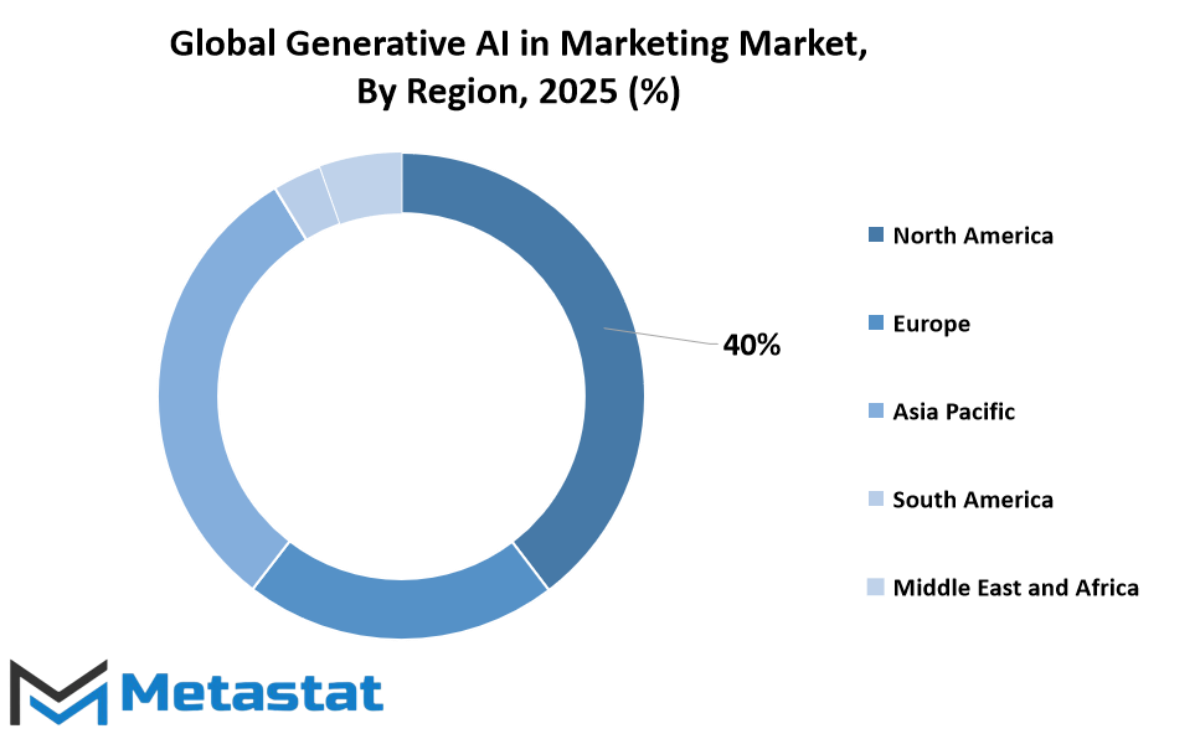
COMPETITIVE PLAYERS
The global generative AI in marketing market is expected to grow rapidly as more companies look for smarter ways to connect with their audiences. Businesses are starting to realize that generative AI tools are not just passing trends but long-term solutions that will shape how marketing is done in the future. Instead of relying on guesswork or traditional strategies, marketers are turning to platforms that help them generate personalized content, predict trends, and make decisions faster and more accurately. Companies like Adobe and Salesforce are already leading this shift by offering features that automate content creation and customer engagement. Google Cloud, with its AI-powered services, allows marketers to analyze large sets of data, helping them understand what their customers want and how best to reach them.
OpenAI has contributed to this movement by providing tools that can generate text for ads, emails, and social media posts that sound human and feel relevant. Jasper AI, Copy.ai, and Writer.com are also becoming more common in marketing departments as teams look to create written content without starting from scratch every time. These tools save time and reduce the need for large content teams while still keeping the message clear and effective.
Deloitte and IBM are working with companies to help them integrate these AI tools into their existing systems. Their focus is not only on offering the technology but also on guiding businesses through how to use it in a way that meets their goals. Amazon Web Services (AWS) provides the cloud infrastructure that many of these AI systems run on, making it easier for companies of all sizes to use powerful tools without needing to invest heavily in hardware.
Marketers are also starting to explore video generation tools like Synthesia, which creates lifelike video content without needing actors or filming. HubSpot and Persado, on the other hand, offer platforms that help companies test different messages and find out which ones are most effective for specific audiences.
As this market continues to grow, the focus will shift from simply using AI to doing so in ways that are ethical, effective, and creative. The global generative AI in marketing market is not just about faster content or better targeting. It’s about changing how businesses think about communication, helping them build better relationships with their customers by understanding and responding to their needs in smarter ways. This future will be shaped by both innovation and thoughtful use of technology.
Generative AI in Marketing Market Key Segments:
By System Type
- Text Models
- Multimodal Models
By Deployment Mode
- Cloud-Based
- On-Premises
By Application
- Content Generation
- Search Engine Optimization (SEO)
- Lead Nurturing & Lead Scoring
- Reporting & Analytics
- Social Media Marketing
- Other Application
Key Global Generative AI in Marketing Industry Players
- Adobe
- Salesforce
- Google Cloud
- Deloitte
- OpenAI
- IBM
- Amazon Web Services (AWS)
- Jasper AI
- Copy.ai
- Writer.com
- HubSpot
- Persado
- Synthesia
WHAT REPORT PROVIDES
- Full in-depth analysis of the parent Industry
- Important changes in market and its dynamics
- Segmentation details of the market
- Former, on-going, and projected market analysis in terms of volume and value
- Assessment of niche industry developments
- Market share analysis
- Key strategies of major players
- Emerging segments and regional growth potential



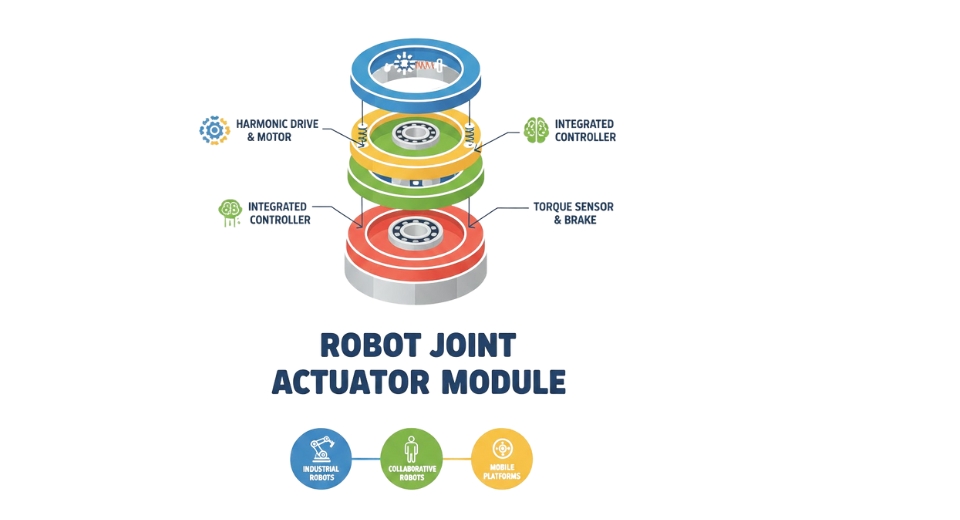
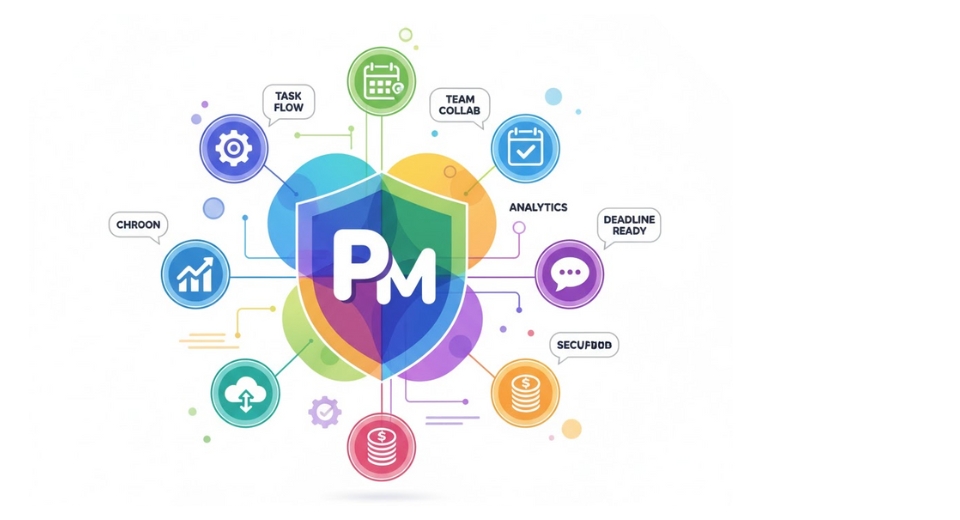
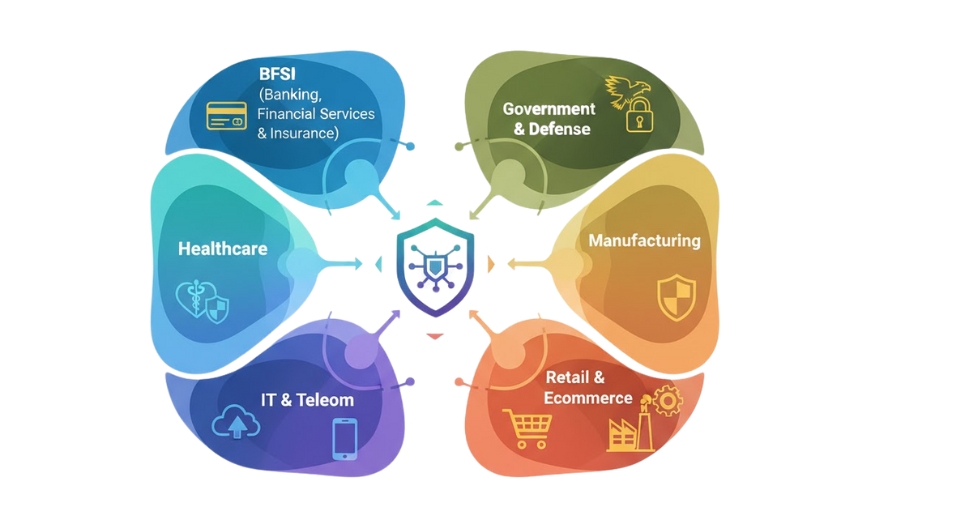
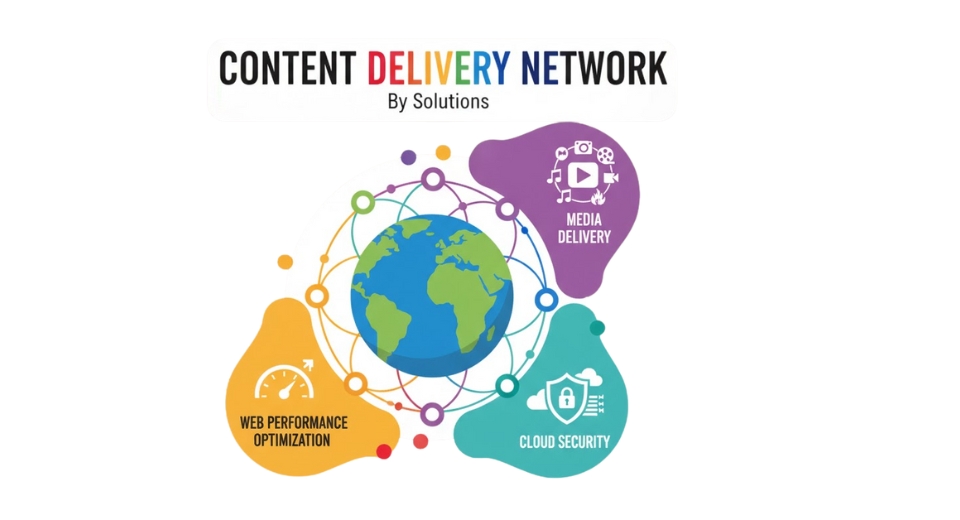

 US: +1 3023308252
US: +1 3023308252






